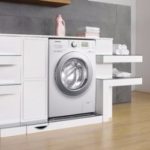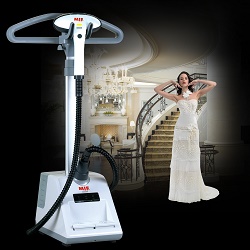What they say error codes washing machine Samsung
Modern washing units not only simplify the life of their owners, but also help in the repair process. Self-diagnostics of the device allows you to quickly identify and fix the problem, you just need to know the error codes of the washing machine, for example, the company Samsung. The specific code indicates the location of the problem.. Below are the most frequent places of breakdowns in the device, the corresponding code marks and the possible reasons for their occurrence.
Content
- 1 Water level sensor
- 2 Tachogenerator (or motor) engine
- 3 Water flow
- 4 Draining
- 5 Vibration sensor
- 6 Power supply
- 7 Communication between control boards
- 8 Switches on the control panel
- 9 Water cooling
- 10 Hatch door
- 11 Ventilation
- 12 A heating element
- 13 Water leak
- 14 Overflowing water
- 15 Temperature sensor
- 16 Overheat
- 17 Imbalance
- 18 Foam
Water level sensor
If the machine does not receive information from water level sensor, codes 1E, 1C or E7 may be displayed. The causes of this failure may be as follows:
- Malfunction of the sensor itself.
- The problem with contacts.
- Sensor tube problems: punctured, jammed, pinched.
- Incorrect installation of parts.
- Mistake control module.
The solution to this issue is to clean the parts, install them correctly or replace the related parts.
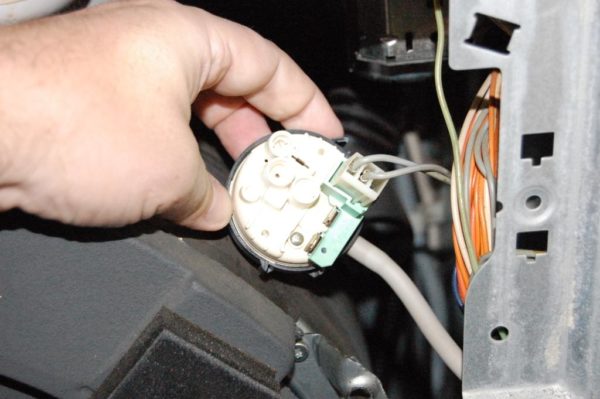
Tachogenerator (or motor) engine
If the motor is broken or it cannot work correctly due to clogging or excessive laundry, the Samsung machine can issue codes 3E, 3У1, 3Е2, 3Е3, 3Е4, 3С, 3С1, 3С2, 3С3, 3С4 or ЕА. The causes of such errors can be:
- Blocking the engine due to the ingress of foreign objects.
- Problems with internal wiring or contacts.
- Malfunction of the tachogenerator itself.
- Motor overload due to excess laundry weight.
- Incorrect engine assembly.
- Control Module Error.
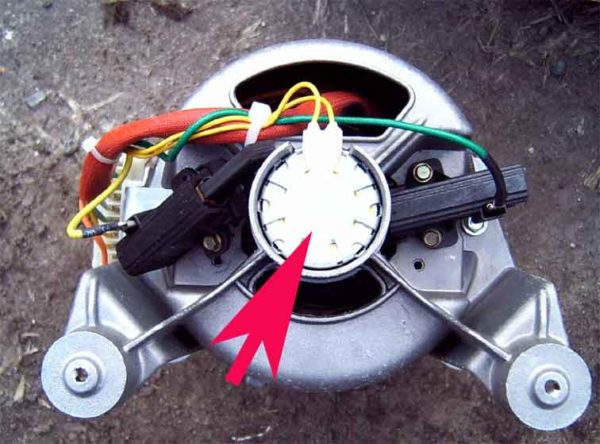
To address these issues, you need to reduce the amount of dirty laundry in the drum of the machine, remove blockages, properly assemble engine parts, fix electrical wiring problems or contacts, or replace the corresponding broken parts.
Water flow
An error in the water supply in the washing machine will lead to the appearance of codes 4E, 4E1, 4E2, 4C, 4C2 or E1 on the display. If a unit cannot pour water, the reasons for this failure may be the following:
- Water can not physically get into the machine, for example, due to the lack of cold water in the house.
- Hose problems: pinched, clogged, bent.
- Clogged filter.
- Incorrect assembly or bad contacts.
- The protection of the Aquastop hose has been activated.
- The machine is connected to pipes with hot water instead of cold.
The solution to the problem should logically correspond to the reasons for its occurrence. It is necessary to check the presence of cold water in the house, open the water supply valve to the machine, eliminate blockages or replace broken parts.
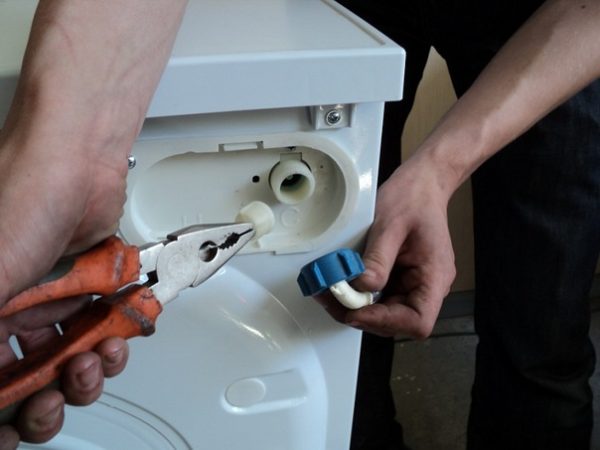
Draining
If a the device cannot drain when washing, it, of course, cannot work correctly, and therefore the error code 5E, 5C or E2 will appear on the display. These codes signal the following possible causes of failure:
- Physical obstruction of the discharge of water through a hose: blockage, clamping.
- Incorrect hose connection.
- Problems with the pump.
- Internal wiring problems
- Congestion in the sewer.
- Water froze due to the use of the device in unacceptable conditions at lowtemperature
The elimination of these problems will be associated with getting rid of the causes, that is, clearing the blockages, followed by correct connection, normalization of operating conditions or replacement of broken parts.
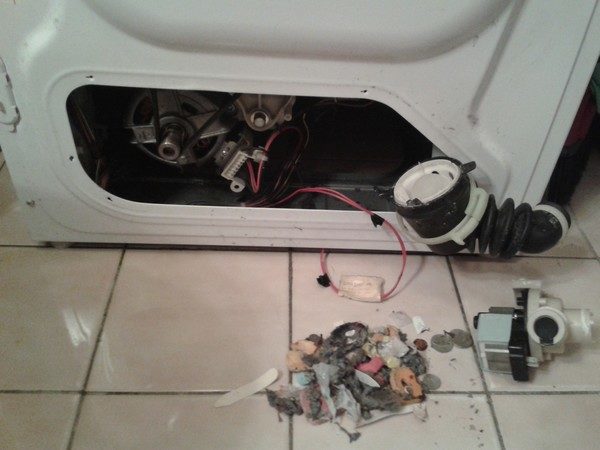
Vibration sensor
If the car does not receive a signal from the VRT + sensor, then it can produce the following fault codes: 8Е, 8Е1, 8С or 8С1. The reason for this error may be the following:
- Broke the sensor itself.
- Problems in the internal wiring of the device.
- Incorrect assembly.
You can correct these errors if you reassemble the parts correctly, fix the wiring and contact problems, or replace the sensor itself.
Power supply
If there are problems with electricity, that is, if the required parameters to the electrical network of Samsung washing machines do not correspond to real indicators, then the following error codes Uc, E91, 9E2 or 9C will be displayed on the board. The reasons may be as follows:
- Invalid power supply surges.
- Using an extension cord to operate the unit.
- Non-standard voltage value.
- Control Module Error.
When these codes appear on the display, if the machine is properly connected, do not stop the operation of the device,with the normalization of the electrical network parameters, the device will continue to work.
Communication between control boards
If there is no communication between the various control modules in the machine, the device will issue an AE, AC or AC6 code. This may be the result of the following malfunctions of the washing machine:
- Incorrect connection of modules.
- Defects of soldering communication connections.
If this is just some kind of failure, then you can turn off the device and turn it on again after 15 seconds. If the error persists, you will most likely need to replace the control module by the service center specialists.
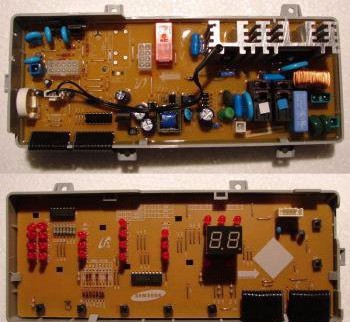
Switches on the control panel
If the buttons do not work, the machine cannot start in the selected mode, and its display will show the codes bE, bE1, bE2, bE3, BC2 or EB. The reasons are as follows:
- Buttons are not pressed or go down.
- Too tightly screwed control panel.
- Internal plastic parts were deformed.
- Problems with the relay: not closed, incorrectly connected.
You need to do the following: try pressing the closed buttons several times to unlock them, turn off the machine and turn it back on into the network, if there is no reaction contact repair.
Water cooling
If the machine tries to drain too hot water, the device will display an error code CE, AC or AC6. This is a result of the following problems:
- The machine is connected to a hot water hose.
- Broken temperature sensor.
The solution is simple: connect the device correctly or replace the temperature sensor.
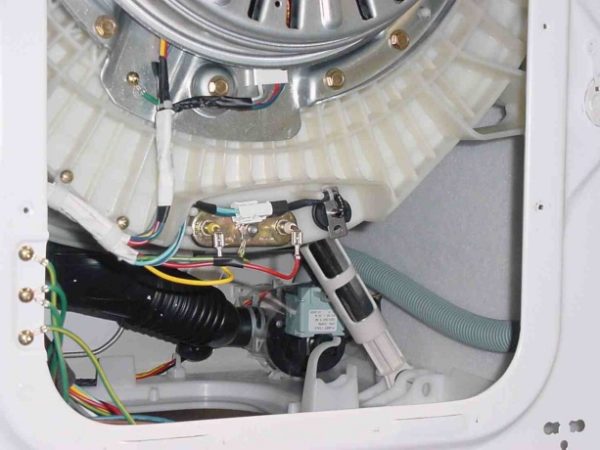
Hatch door
If a the door of the hatch is badly closed, the display will show errors dE, dE1, dE2, DC, DC1, DC2 or ED. The reasons are:
- The door is badly closed.
- The hatch closing mechanism broke.
- The door has shifted due to boiling.
- The door trying to open by force.
- Incorrectly installed lock connector.
- Spontaneous activation of the sensor due to vibration.
- Control Module Error.
In the event of such an error, it is necessary to open and re-close the door in order to prevent the lock or corner of linen from entering the lock. If the error is still displayed, it is necessary to contact the master.
Ventilation
For machines with drying function an FE or FC error may occur. This can lead to:
- Damage to the wiring.
- Exit connector from the installation site.
- Locking blades: getting extra items, no lubrication.
- Failure of the starting capacitor.
Only experienced employees of the service center can solve this problem, so you need to call the wizard.
A heating element
Errors in the work TENA may have the following codes: HE, HE1, HE2, HE3, H1, H2, HC, HC1, HC2, E5 or E6. Such problems occur due to the following points:
- Internal power problems: short circuit or open circuit.
- Broke himself TEN.
- Thermal sensor broke.
- Performance errors steam function.
- Incorrect connection of the machine to the mains.
To solve the problems, you need to try to re-connect the machine correctly to the mains, and when they repeat, call the service center professional.
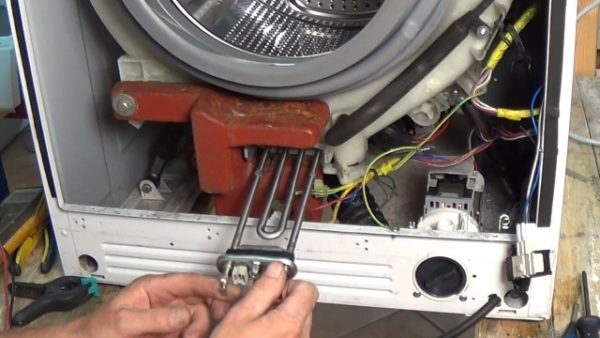
Water leak
The most common problems are errors LE, LE1, LC and E9, associated with spontaneous discharge of water. They are the result of the following errors:
- Drain hose located low.
- Incorrect connection of the hose to the sewer.
- Blackened tank, drain hose or seal.
- The fastening of the heating element has weakened.
- Much foam appears due to excess detergent.
- Incorrectly installed pump cover.
- Broken leakage sensor.
Disconnect the washer from the network, change the position of the hose and check the integrity of the relevant parts.If the problem is not detected, and the error persists, then you need to contact the repair.
Overflowing water
If too much water is poured into the machine, the display will show the code 0E, 0F, 0C or E3. The reasons may be as follows:
- Incorrect drain hose connection.
- The water inlet valve was blocked.
- Failure of the water level sensor.
Turn off the machine and lower the hose into the tub and start the normal wash. If the error persists, then you must contact the repair.
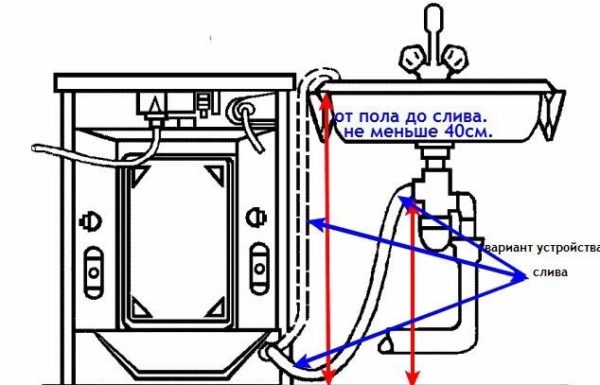
Temperature sensor
Temperature sensor errors have codes tE1, tE2, tE3, TC. TC1, TC2, TC3, TC4 and EC. They arise in cases of:
- Faulty sensor.
- Broke the heater.
- Incorrect sensor installation.
- Problems with internal wiring.
The most correct decision in this situation would be to contact the service center.
Overheat
This error is typical only for units with a drying function and has the code EE. It occurs because of the following incidents:
- Broken temperature sensor drying.
- Internal wiring rupture
- Error TENA drying.
It’s impossible to fix this problem on your own; you need a mandatory specialist examination.
Imbalance
If the device is not balanced, the message UE, UB or E4 lights up on the display.This is due to the following factors:
- Uneven distribution of linen in the machine.
- Disrupted unit balancing.
You need to do the following: evenly distribute the laundry inside the device and balance the device according to the instructions.

Foam
When an excess amount of foam appears in the machine, the code Sud, SUdS, 5D or SD appears on the display. The reasons are as follows:
- An excess amount of powder was filled.
- Used powder, not suitable for the machine-machine.
- Used low-quality powder.
If the foam does not fall out of the unit, then you can do nothing when the foam settles, the device will continue washing, and after that you will need clean the filter. If the foam is knocked out of the device, then it is necessary to turn it off, remove the laundry and clean the filter.
Error codes Samsung washing machines allow you to quickly understand the localization of the problem, and to fix them as quickly as possible. If you can’t fix the problem yourself, you need to seek help from professionals.

/rating_off.png)






